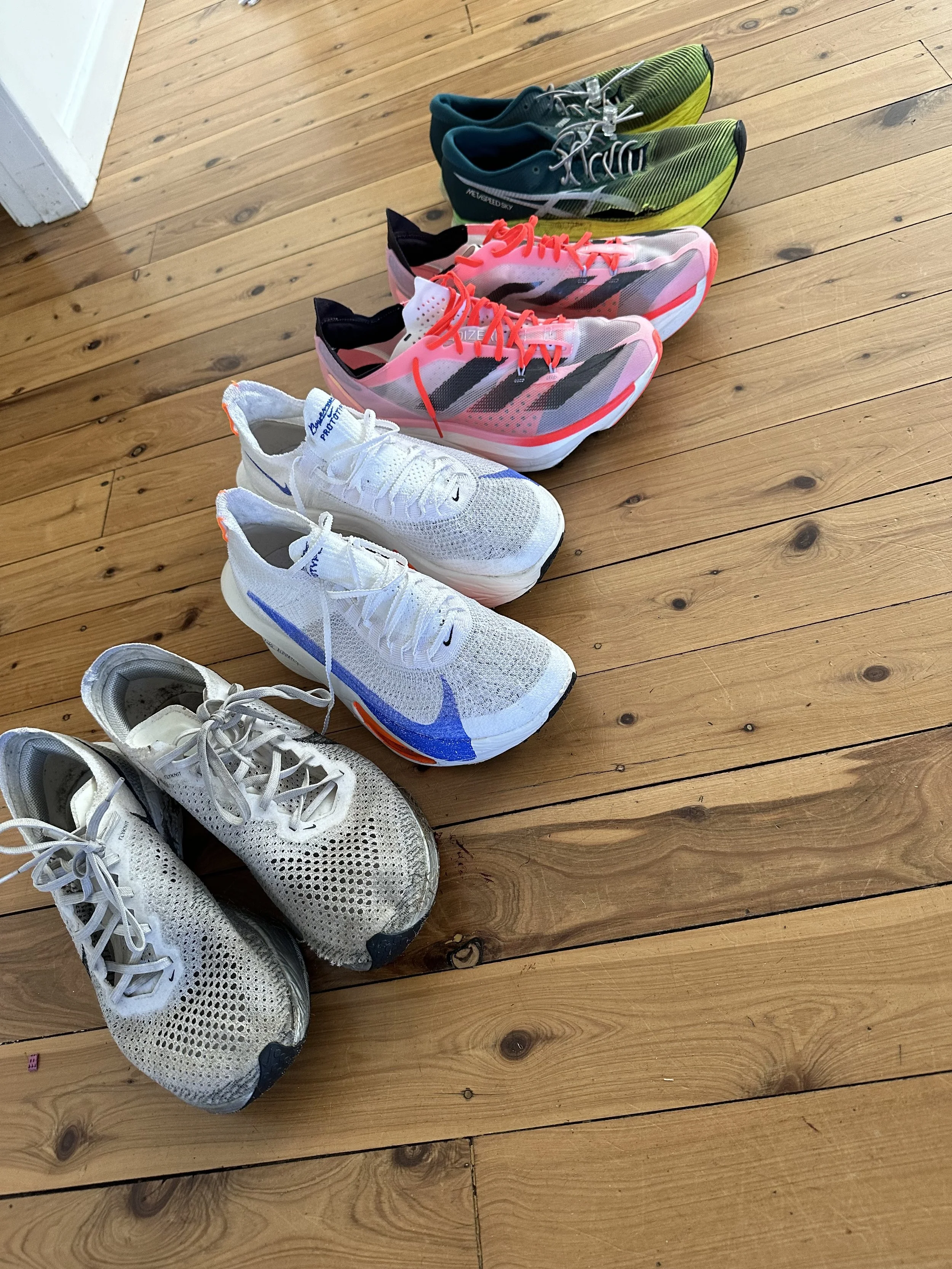Shoe testing to maximise your performance
The super shoe era is well upon us. Unfortunately, the super shoe era didn't provide equal gains for all athletes. Nike's initial white paper on releasing arguably the first super shoe, the Nike Vaporfly 4%, didn't find every athlete gained 4% in running economy. 4% was just the average with some runners getting up to 6% advantage and some unfortunate non-responders in their testing gaining absolutely nothing. There is no doubt in mind that in the future every professional runner will have custom made shoes to seek out every possible advantage they can get for their particular run style and body type.
Thankfully, even for low responders nearly every major running brand now has a super shoe, and from our testing there is a huge variation as to what shoe will work for them. It can be costly and time consuming to do the testing but given much like Nike's initial testing we're also finding up to 6% advantage compared to bog standard trainers (BSTs) when testing RPG athletes when they find the right shoe. If you're serious about your race performance you should take some time to do the testing. Here are 4 tips to help you fast track finding what shoe is best for you.
try to borrow shoes
Borrow shoes from people the same size so you have a few pairs of shoes to cycle through in your testing without having to drop $400 buck shoes that you may find are not the most efficient for you. To note, in the not too distant future, given how important we've found it to be RPG plans on having a range of shoes in different sizes and Vo2 max equipment where people can book in and cycle through shoes to find the best shoe for them.
test at the pace you plan on racing at
We regularly see that the shoe that is most efficient for an athlete at Ironman marathon intensity is often different from the shoe that is most efficient for them at 10-21km fresh running intensity.
Image @koruptvision
test specific to the distance you’re running
What shoes test most efficiently for you in the initial kilometres may not be most efficient 15/20kms into a run. OR even if they are most efficient even under fatigue, other issues might arise. Ie- Some super shoes that lower strike cadence and/or increase stride distance from what a runner would naturally run, can lead to hamstring issues and cramping over longer race distances. There is no point in choosing a shoe that gives you the lowest heart rate for pace if during a marathon you come to a standstill with cramping in the final portions of an event.
testing protocol matters
If possible, test several times on multiple days to clearly establish patterns. Cycle through the shoes multiple times throughout the run, and try to maintain reasonable hydration and fuelling throughout.
A classic example of testing we implement for marathon and Ironman athletes is a key simulation run of 28-32km as below:
Warm up:
2-3kms warm up, building to race intensity.
Main Set:
3 km intervals over the same looped circuit. Swap shoes every 3 km and hit the lap button at the 1km point to measure the average heart rate or pace (depending on how you want to do the test) to analyse later once the testing is complete.
It's time consuming but so is training to gain the 5-20 sec/km advantage that finding the right shoe could give you.


